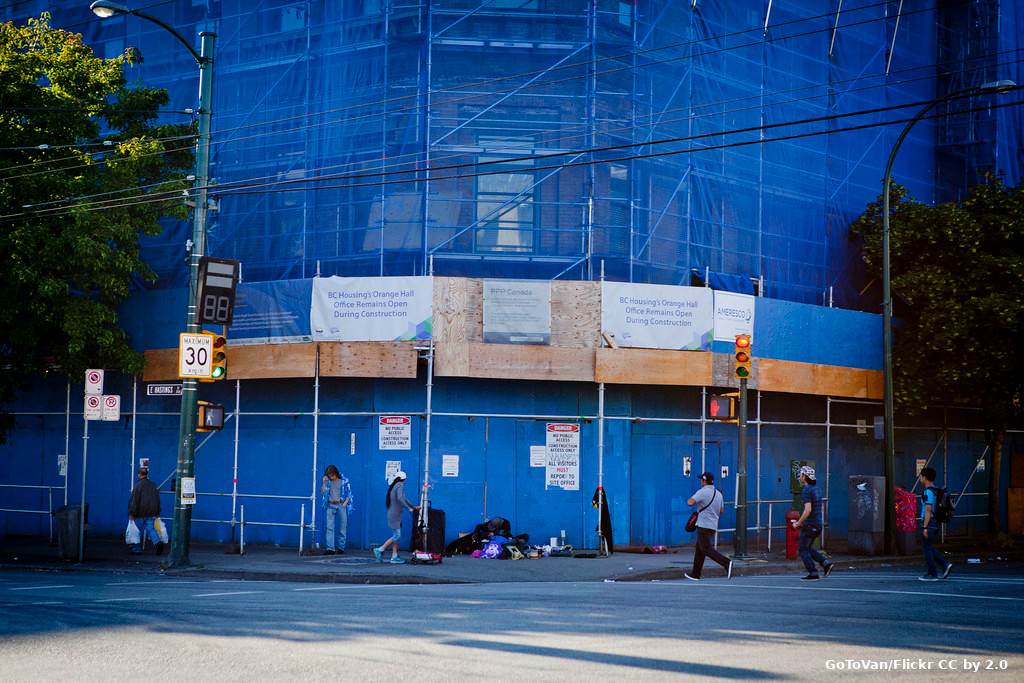City of Vancouver ignored gentrification while pushing neoliberal policies of market development for “livability”, study finds

The City of Vancouver ignored gentrification and displacement of working-class and low-income families as the city hall pursued neoliberal policies of market development under the “livability” narrative, a new study shows.
In their detailed analysis of 37 planning documents and city council reports, University of Waterloo masters student Giuseppe Tolfo and professor Brian Doucet, who also co-authored the study, established that the City of Vancouver’s current definition, approaches and application of livability contributes to the gentrification of the vulnerable communities, across history[1] Towards the analysis of urban livability in China: spatial–temporal changes, regional types, and influencing factors 2022, Environmental Science and Pollution Research https://doi.org/10.1016/j.cities.2022.103564.
“Vancouver’s planning history over the past five decades has been dominated by its very public efforts to become more’ livable.’ On the surface, it is difficult to be opposed to the idea of a livable city,” Tolfo, a master’s student in the University of Waterloo’s School of Planning said. “Therefore, scholars, planners, and practitioners must continue to question what liveability actually means, who benefits from planning the livable city, and who is excluded.”
“Our research seeks to reorient the concept of livability by rendering visible the conflicts needed to produce ‘livable’ spaces and by emphasizing the uneven social, spatial, and racial outcomes of planning for livability,” said Doucet, a Canada Research Chair in Urban Change.
The pair stress Vancouver’s low-income residents and vulnerable populations face a difficult future if there are no pertinent actions to stem the tide from shifts in the greater political economy of the city.
“Thinking about true livability from an inclusive or equitable perspective means considering movements demanding the universal right to housing, racial justice, public transportation and infrastructure, education, social infrastructure, food security, fair representation and democracy, and health services,” Tolfo said.
Tolfo and Doucet argue that when livability has very different meanings depending on the context; for instance, if land is transferred to a planning team with a less equitable interpretation of livability, gentrification can occur. “This happened in Vancouver when the land around a highway viaduct was shifted from DTES plans to planning for the NEFC,” said Doucet.
They recommend that planning and policymakers expand efforts to work with those committed to exposing histories that have been erased to pave the way for capitalist manifestations of ‘livability’ and centre displacement and exclusion in any analysis of what a livable city means.
Northeast False Creek (NEFC)
“One of the first examples of neoliberal, growth-oriented urbanism of this new era was the Expo ’86 World’s Fair,” Tolfo and Doucet wrote.
The authors point cite studies that show “more than one thousand residents were displaced to make way for this ‘hallmark event’, which signalled Vancouver’s arrival as a
global metropolis.”
“After Expo, plans were developed for the site, named Falls Creek North. These were laid out in the False Creek North Official Development Plan (FCNODP), published in 1990. By this time, neoliberal policies were firmly entrenched and the City had fewer resources for affordable
Housing,” the researchers wrote. “As a result, the redevelopment of False Creek North and, subsequently Northeast False Creek, was largely led by private developers.”
“Emphasis was placed on architecture, heritage, and memorable vistas. Heritage preservation of the industrial character focused on the built environment, with little reference to the working-class history of the area,” Tolfo and Doucet wrote. “In line with neoliberal urban development policies that guided waterfront regeneration in Canada at this time, the FCNODP’s
focus was on enabling large, private residential developers to revitalize disinvested waterfronts.”
“Despite fairly recent working-class ties, FCNODP effectively erased the claim to space of the working-class, setting the neighbourhood on a different trajectory,” they add. “The site became a symbol of the globalization of urban development in Vancouver.”
“Livability in False Creek centres the aesthetic priorities first articulated by TEAM,” they point out. “Social justice, equity and redistribution are absent from plans for NEFC.”
“Development pressure as a threat to neighbourhood livability is acknowledged in planning documents,” they argue. “But the remedies proposed are additional parks, open spaces, and noise mitigation measures to compensate for lost resident comfort. There is no mention of the effects of market development on low-income communities. Just as important as what is in a plan is what is left out: across these policy documents, released between 1990 and 2011, there is no mention of gentrification, or the effects of market-based development on low-income communities.”
Downtown Eastside (DTES)
The authors cite research that shows DTES was once a thriving working-class community and the stop-off point for generations of immigrant groups, including those excluded from other neighbourhoods.
Today, it is among the poorest neighbourhoods in Canada with high levels of homelessness and addiction.
“But poverty continues to be produced within the modern economy,” Tolfo and Doucet wrote. “As a result of economic shifts towards a post-industrial economy, the rise of neoliberal urban policies, and the financialization of housing, Vancouver continues to experience deepening unaffordability and increased income polarization.”
They cite research that show that the DTES has become the home of last resort, for the recent victims of these broader shifts, priced out of the rest of the city.
Tolfo and Doucet argue that while the DTES articulation of livability is attentive to the needs of some vulnerable populations, its emphasis on market-driven responses also limits opportunities for others.
“This is partly because the Housing Plan uses a selective and narrow interpretation of poverty – both historic and contemporary – in the DTES,” they point out.
References
| 1. | ↑ | Towards the analysis of urban livability in China: spatial–temporal changes, regional types, and influencing factors 2022, Environmental Science and Pollution Research https://doi.org/10.1016/j.cities.2022.103564 |



